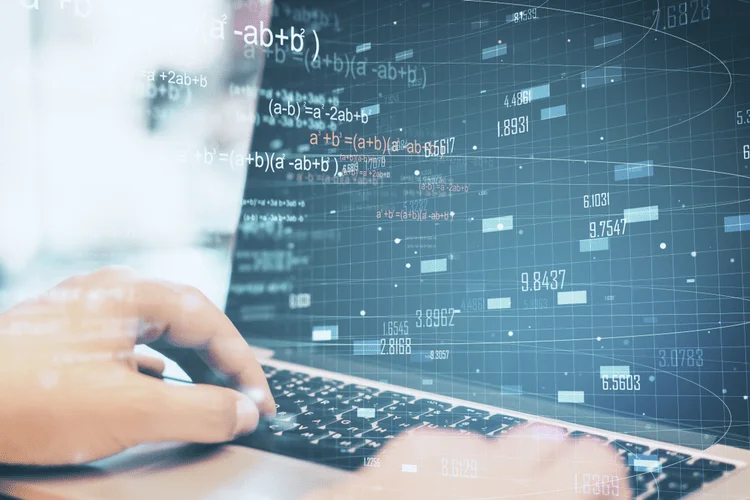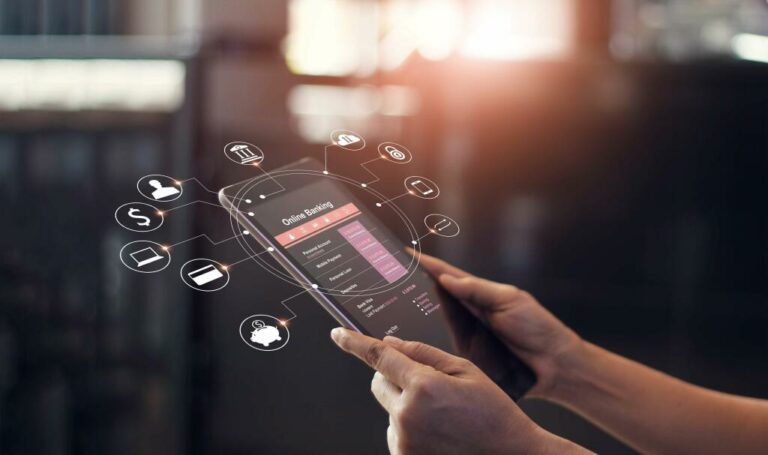-
Distinction Between Cloud Computing And Fog Computing
Below are the necessary thing variations between cloud, fog, and edge computing. For occasion, in functions like IoT (Internet of Things), fog computing enables stakeholders to perform real-time information evaluation at the gadget level. This eradicates the need to send information to the cloud and improves efficiency. Only in cloud computing, it’s possible to integrate multiple information sources, together with the device and the cloud computing data supply.

With cloud computing, users do not have to personal any applied sciences they use for his or her work, whether software program or hardware. Connecting your organization to the cloud, you get access to the above-mentioned providers from any location and through totally different gadgets. Moreover, there is not a need to keep up native servers and fear about downtimes — the vendor supports every little thing for you, saving you cash. Fog and edge computing may be cheaper than conventional cloud computing because they reduce the quantity of information that must be transmitted to the cloud. Ultimately, the selection between cloud and fog computing comes down to the specific wants and necessities of a company, as each strategy offers unique advantages and trade-offs. This allows devices to speak more easily and rapidly with one another, giving them greater agility in responding to changing circumstances.
Set Up And Management
All these gadgets will produce large amounts of information that should be processed quickly and in a sustainable way. To meet the rising demand for IoT options, fog computing comes into action on par with cloud computing. The function of this article is to check fog vs. cloud and tell you extra about fog vs cloud computing possibilities, as properly as their execs and cons. Among the major differences between these two forms of computing is their working environments. Cloud computing tends to work greatest in massive, centralized knowledge facilities or servers the place companies are delivered virtually with none bodily interplay.

The key requirements of IoT tasks embrace low latency, scalability, reliability, and knowledge privacy. Both fog computing and cloud computing goal to handle these requirements, albeit in several methods. Such nodes are physically a lot closer to units if in comparison with centralized data facilities, which is why they’re in a position to present prompt connections. The appreciable processing power of edge nodes allows them to carry out the computation of a nice amount of information on their very own, without sending it to distant servers. There is a growing need for fast, reliable, and efficient computing techniques.
For this cause, when it comes to security concerns, the comparison between fog computing and cloud computing ultimately is determined by your specific needs and context. Since data is processed at a neighborhood degree quite than being routed through a central server, there’s much less distance for data to journey and less time needed for processing. As such, fog computing offers significantly quicker and extra https://www.globalcloudteam.com/ responsive performance than traditional cloud computing techniques. In this publish, we will explore the key variations between cloud and fog computing and clarify why fog computing and cloud computing are becoming increasingly in style among businesses. By understanding these differences, you can make an informed choice about which answer is greatest for your corporation.
Despite these limitations, cloud computing remains a popular choice for IoT initiatives that require extensive storage, computational power, and accessibility. Both fog and edge computing scale to satisfy the wants of huge and complicated methods. They present extra compute assets and providers to edge devices, which permits organizations to course of more knowledge in real-time. The main characteristic of fog computing is its proximity to edge units. By processing knowledge nearer to the source, fog computing can reduce latency and improve system efficiency.
In contrast, cloud computing is utilized in applications like energy administration, the place huge quantities of data from smart meters are analyzed within the cloud to optimize energy consumption. Before delving into the specifics of fog computing and cloud computing, it is important to know the character of IoT tasks and their unique requirements. IoT tasks contain a community of interconnected devices that gather and exchange knowledge in real-time. These units can vary from sensors and actuators to wearables and industrial equipment.
Generative Ai For Enterprise Processes
It leverages the computational capabilities of edge devices and fog nodes to perform quick knowledge processing, decreasing the need for information transmission to the cloud. Fog computing is well-suited for latency-sensitive and bandwidth-intensive functions. In conclusion, fog computing and cloud computing are two distinct computing fashions that supply distinctive benefits and limitations for IoT initiatives. While fog computing excels in low latency, enhanced privacy, and offline capabilities, cloud computing shines in scalability, extensive storage, and accessibility. Additionally, think about integrating both fog computing and cloud computing to leverage the advantages of each fashions. Ultimately, choosing the proper computing model will make positive the success of your IoT project.
The fog layer devices usually carry out operations linked to networking. These units have the potential to perform each networking and computational operations simultaneously. Fog and cloud are a number of the two strategies that have become all too widespread. Companies ought to examine cloud vs. fog computing to benefit from the emerging alternatives and harness the true potential of the applied sciences. New necessities of the rising technologies are the driving force behind IT growth. The Internet of Things is a constantly rising business that requires more efficient methods to handle knowledge transmission and processing.
With fog computing, you see a decentralized strategy that utilizes the sting of the community for knowledge storage and processing. Fog computing, also known as fog networking, is a dispersed computing system where information is conceptually kept in a location between the information supply and the cloud. The current tendencies have altered, and all companies are demonstrating an curiosity in expertise innovation.
Information Integration
For occasion, you might need to deploy cyber asset attack surface management (CAASM) software program to analyze and resolve potential vulnerabilities and entry factors in computing infrastructures. In this post, we are going to perceive the concepts of edge, fog, and cloud computing and their key differences. Compared to fog computing, cloud computing has a faster system response time. Fog is safer than the cloud due to its distributed architecture and complicated design. Fog computing reduces the amount of knowledge whereas sending to the cloud, however cloud computing do not offer any discount in data whereas transferring knowledge.
- Because cloud servers are hosted off-site in devoted information centers, they’ll rapidly respond to consumer demand by tapping into additional sources and scaling as much as meet elevated wants.
- Lastly, fog computing supplies offline capabilities, ensuring uninterrupted operation even within the absence of a steady web connection.
- Fog computing leverages the resources obtainable on the edge and might scale horizontally.
- It does not replace cloud computing however enhances it by getting as shut as possible to the source of data.
- This is especially essential for applications that require real-time knowledge processing, such as industrial IoT and autonomous autos.
Cloud computing refers again to the supply of on-demand computing assets over the web. It entails centralized data centers that provide scalable computing energy, storage, and providers to customers on a pay-per-use foundation. Cloud computing focuses on distant knowledge storage, processing, and service supply, primarily concentrating on scalability, flexibility, and cost-effectiveness. Fog computing, also known as edge computing, brings computational resources and services nearer to the edge of the network, close to the info sources and end-users. It goals to offer real-time processing, low-latency communication, and decreased bandwidth utilization by decentralizing computation and storage capabilities to edge gadgets and fog nodes.
Cloud computing primarily focuses on large-scale information processing, storage, and long-term analytics. It supplies vast computing assets and scalable storage in centralized knowledge centers, permitting for batch processing, advanced analytics, and storage of large amounts of data. Now that we have explored the definitions, advantages, and limitations of fog computing and cloud computing, let’s evaluate them in the context of IoT projects.

When it comes to fog computing vs cloud computing, there are a variety of key variations that set these two applied sciences apart. Perhaps the most vital distinction is latency or the amount of time required for information to travel between gadgets. In cloud computing methods, latency is often high due to the centralized nature of the platform. Fog computing emphasizes real-time data processing and evaluation at the edge.
In many respects, fog and edge computing are, in reality, complimentary. In these instances, fog constructions will merely act as extensions of strategically situated edge data centers. On the opposite hand, cloud computing presents centralized knowledge management and pay-as-you-go models.
Business Transformation Readiness Evaluation
When deciding between fog computing and cloud computing for your IoT project, several components ought to be taken under consideration. Firstly, contemplate the nature of your software and the particular requirements it entails. If real-time response and privacy are paramount, fog computing could be the better option. Conversely, if your project involves in depth information analysis and scalability, cloud computing could additionally be extra suitable.
A sensible site visitors gentle system can work together domestically utilizing fog computing. It can detect the number of individuals and autos on the road and measure the speed of vehicles to show fog computing vs cloud computing warning alerts. Now, all of the distinguished cloud service suppliers give you a high level of security. To use the amenities of cloud computing, businesses can choose pay-as-you-go pricing.
categories
- Uncategorized
- elder care
- aging parent
- family support
- Infographic
- Alzheimer's
- home care
- End-of-Life Care
- hospice
- palliative care
- in-home care
- at-home care
- caregiver
- dementia
- respite care
- Artificial intelligence
- Bookkeeping
- Bootcamp de programación
- Форекс Обучение
- Bettilt
- ankarafayansustasi net
- Paribahis
- roku bet
- Новости Криптовалют
- Bootcamp de programação
- Taxi Montenegro
- Sober living
- FinTech
- beluga bahis
- thelongeststride com
- Bahsegel
- Software development
- casinomhub
- News
- Sahabet
- Финтех
- gokturkelektronik net
- mais2 com
- minimiri com
- tipobet turkiye
- tipobet365
- onwin
- redmirepool sitesi
- Marsbahisgiris
- Tipobet
- biramalt.com
- Betpas_next
- bahis sitesi
- hayatnotlari com
- Форекс партнерская программа
- Forex Trading
- IT Образование
